#larry shue
Text


8 notes
·
View notes
Text
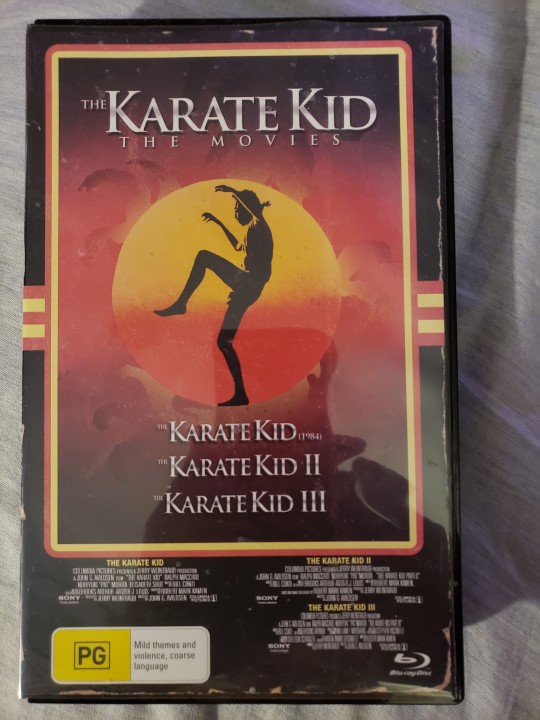
Now showing on my 80's Fest Movie 🎥 marathon...The Karate Kid (1984) on amazing blu-ray! #movie #movies #actionadventure #teenmovies #karatekid #TheKarateKid #ralphmacchio #patmorita #williamzabka #ElisabethShue #rippatmorita #MartinKove #RandeeHeller #RobGarrison #riprobgarrison #tonyodell #larrydrake #riplarrydrake #FrankieAvalon #bluray #80s #80sfest #durandurantulsas5thannual80sfest #cobrakai
#movie#movies#action adventure#teen movies#ralph macchio#pat morita#rip pat morita#Elisabeth Shue#William Zabka#Martin Kove#tony o'dell#randee heller#rob garrison#rip rob garrison#Larry Drake#rip larry drake#tom fridley#frankie avalon#blu-ray#80s fest#80s#duran duran tulsa's 5th annual 80s fest#Spotify
2 notes
·
View notes
Text
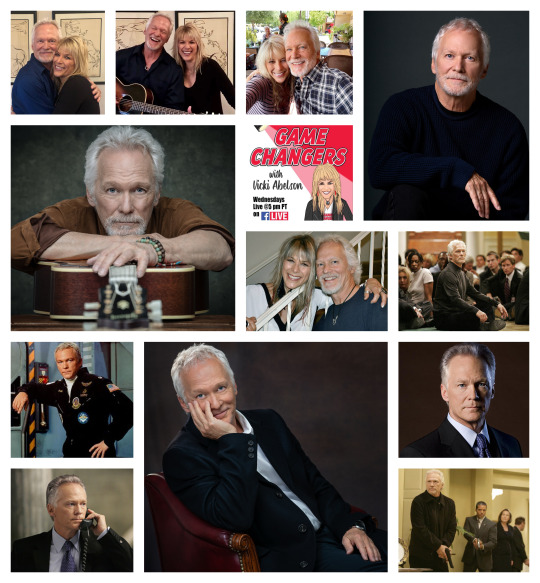
Today Live, James Morrison! I deeply adore him. As an actor, writer, filmmaker, musician, most importantly, as a husband, father, friend, fellow, and stellar human.
I first remember James as CTU’s director Bill Buchanan on 24. He’d been around long before that. He did tenure on my beloved Private Practice, was a regular on HawthoRNE, appeared on Frasier, Quantum Leap, The X-Files, JAG, Murder She Wrote, The West Wing, Six Feet Under, to name some. James was a regular on the revamped Twin Peaks, was featured on NCIS, Major Crimes, Castle, The Twilight Zone, recently, Intersection, has three projects in the cooker, is as adept on stage, the recipient of the Los Angeles Drama Critics Circle Award for Outstanding Performance and three Drama-Logue Awards… the man works. And, he plays. Like an angel. A singer/songwriter, I met James about 10 years ago when he graced Women Who Write and my living room. James was on the bill with Bob Cowsill and Ed Asner. It’s a day that remains at the top of my top for the salon’s 12 + years. I'll be pleading with him to treat us to his, Selfish Man, about, guess who, who just happens to be making headlines, yet again.
Listen here: http://jpmorrison.com/blogs/james/new-song-selfish-man
James, and his wife Riad Galayini, co-directed and produced the feature documentary Showing Up, an unprecedented look at the audition, with some of our most accomplished working actors reflecting on the process and how it affects them. Nathan Lane, Sam Rockwell, Eli Wallach, and Kristin Chenoweth are a few of those interviewed. Just watched it and I’m rethinking this whole return to acting thing. It’s a wonderful film, raw and moving, and so damn honest. Most recently, James developed and performed his one-man play, Leave Your Fears Here at the Ojai Playwrights Conference. His plays have also been produced and/or developed at the Sundance Institute, Ensemble Studio Theatre, The Playwrights' Center of Minneapolis, L.A. TheatreWorks, The MET Theatre, Two Parts Theatre Company, The Classical Theatre Lab, City Theatre in Miami, The Road Theatre, The Mojo Ensemble, The Wooden O, The Philadelphia Fringe Festival and the Sal
t Lake Acting Company where he has directed several plays including those by Sam Shepard, John Robinson, Larry Shue, and Beth Henley.
James is a great big peach of a man. Delicious in spirit, gigantic in talent, and oh so easy on the ears and eyes. Can’t wait to spend time in his spectacular company… see him… and, hear him. Lucky me. Lucky us!
James Morrison Live on Game Changers with Vicki Abelson
Wednesday, January 31, 5 PM PT, 8 PM ET
Streaming Live on my Facebook
Daily Toni Vincent & @peter_and_paul_ Cartoons
#JamesMorrison#Actor#24#Singer#Songrwriter#TwinPeaks#PrivatePractice#musician#filmmaker#GameChangersWithVickiAbelson#VickiAbelson#GameChangers#podcast#inspirationalpfodcast#Celebrity#FacebookLive#Talkshow#Chat#Live#comedy#music#talk#community#caring#sharing#sharingiscaring#streaminglive#COVID
0 notes
Photo

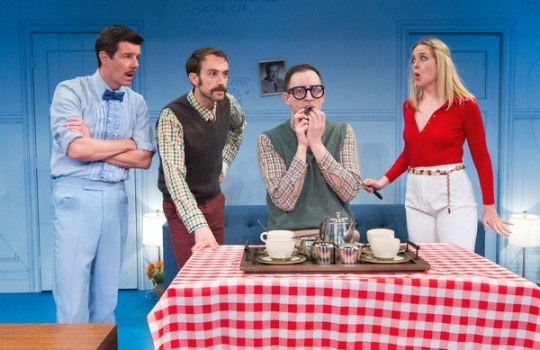



the cast of The Nerd by Larry Shue performing at the Bucks County Playhouse directed by Marc Vietor
[pictures via BroadwayWorld]
#I love the blue print set design like a lot !!#I'm kinda digging the baby blue suit tbf#zuzanna szadkowski#grant shaud#Gavin Lee#Joe kinosian#Kyle Cameron#clea alsip#avey noble#Larry Shue#Marc Vietor#personality pic#but i jeté#what a muffin
4 notes
·
View notes
Text
Today was hectic, tech week is 2 days away, i was working in the theatre since 8 in the morning, tonight was our first run and first run with an audience, I am left at 11, I am tired
1 note
·
View note
Text
Misha’s galaxycon panel highlights
Misha’s favorite guest star is Timothy
Casifer was one of Misha’s favorites iterations of Castiel
If misha could have any supernatural powers would be time travel. He would like to change the course of history.
Pointed out that Castiel lost powers over time, but not sure why it happened.
Misha believes that a piece of advice that Castiel would give to him is to be honest.
If misha could write a story arc for Castiel, it would be to explore more of Castiel’s human experience
Misha’s dream role would be to play the lead character in the play The Foreigner by Larry Shue. Or he’d like to adapt it.
What would be Castiel’s theme song? Vespers
Favorite show when he was younger was The Greatest American Hero
If misha could hang out with any character he portrayed, it would be Crazy!Cas because it seemed like he was tripping on acid.
795 notes
·
View notes
Photo
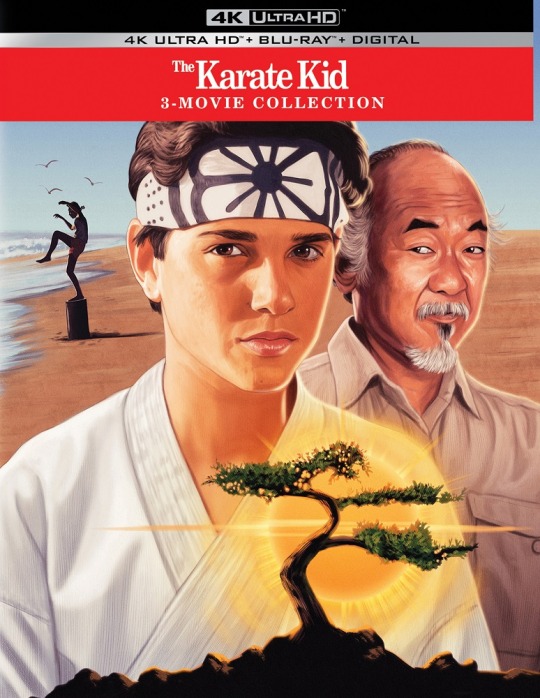
THE KARATE KID 3-MOVIE COLLECTION
THE KARATE KID (1984)
Starring Ralph Macchio, Noriyuki "Pat" Morita, Elisabeth Shue, William Zabka, Martin Kove, Randee Heller, Chad McQueen, Ron Thomas, Rob Garrison, Tony O'Dell, Israel Juarbe, William Bassett, Larry B. Scott, Juli Fields, Dana Andersen, Frank Burt Avalon, Jeff Fishman, Ken Daly, Tom Fridley, Pat E. Johnson, Bruce Malmuth and Andrew Shue.
Screenplay by Robert Mark Kamen.
Directed by John G. Avildsen.
Distributed by Columbia Pictures. 127 minutes. Rated PG.
THE KARATE KID PART II (1986)
Starring Ralph Macchio, Noriyuki "Pat" Morita, Tamlyn Tomita, Nobu McCarthy, Yuji Okumoto, Danny Kamekona, Joey Miyashima, Marc Hayashi, Traci Toguchi, Bradd “BD” Wong, Clarence Gilyard, William Zabka, Martin Kove, Chad McQueen, Ron Thomas, Rob Garrison and Tony O'Dell.
Screenplay by Robert Mark Kamen.
Directed by John G. Avildsen.
Distributed by Columbia Pictures. 113 minutes. Rated PG.
THE KARATE KID PART III (1989)
Starring Ralph Macchio, Noriyuki "Pat" Morita, Thomas Ian Griffith, Robyn Lively, Sean Kanan, William Christopher Ford, Jonathan Avildsen, Martin Kove, Randee Heller, Pat E. Johnson, Rick Hurst, Frances Bay, Joseph V. Perry, Jan Tříska, Gabriel Jarret and Glenn Medieros.
Screenplay by Robert Mark Kamen.
Directed by John G. Avildsen.
Distributed by Columbia Pictures. 112 minutes. Rated PG.
With the popularity in recent years of the TV reboot series Cobra Kai, it’s always good to go back to revisit the original series of films – if for no other reason than to brush up on some of the characters who appear in Cobra Kai. Therefore, this first release on 4KUltra HD and Blu-ray of the first three Karate Kid films – The Karate Kid, The Karate Kid Part II and The Karate Kid Part III – is a nice way of catching up. And – at least in the case of the first film – it has much more to offer than that.
Technically this is not the complete Karate Kid lineup. There is a 5-movie collection released several years ago which is still available on DVD. That grouping also includes The Next Karate Kid (1994) in which Mr. Miyagi takes on a new student, a young girl played a then-unknown Hilary Swank. It also includes the awful 2010 reboot of the series with Jaden Smith and Jackie Chan – and the less said about that film, the better. Neither of those films are really missed in this collection. In fact, an argument could be made about whether anyone will rewatch Part II and Part III more than once or twice.
However, I think it makes sense to limit this collection to the three films which feature Ralph Macchio as Danny LaRusso and Pat Morita as Mr. Miyagi, all of which were written by Robert Mark Kamen and directed by John D. Avildsen. (Only Morita was involved in the fourth film, and none of the original cast or crew took part in the reboot.)
Of course, the only truly good film of the trilogy (and the franchise) was the first one. The second film had its moments, but eventually tried so hard to up the stakes that it completely spun off the rails. The films are supposed to take place in about a year-long period, although the films took five years between the first and last one.
Even though it is rather predictable and not exactly Oscar-worthy, The Karate Kid deserves its status as a fan favorite feel-good film. It is the story about a scrawny Newark, NJ teen who moves cross country with his mother and quickly falls on the wrong side of the local bullies at his new high school – particularly their leader Johnny Lawrence (William Zabka). Unfortunately, the bullies are star karate students, and they are beating Daniel up daily. When he finds out that his new apartment’s handyman, Mr. Miyagi knows karate and is willing to teach him, Daniel joins the local martial arts tournament to prove himself to the bullies.
And yes, despite the somewhat popular revisionist history which likes to paint Johnny as a misunderstood victim – as espoused in popular culture on Cobra Kai and How I Met Your Mother – Johnny is indeed a bully. You can make the argument that he was led astray by his sensei Kreese (Martin Kove). You can make the argument that his heart was broken by losing his ex-girlfriend Ali (Elisabeth Shue) and he took out his anger on her new boyfriend Daniel. Neither of those arguments would be completely wrong, but it is letting him off the hook way too easily. That does not change what he did and how he acted. Just because he had some regrets does not excuse it. In fact, that is part of what makes Cobra Kai so fascinating, it shows the way that Johnny has grown and changed – and the ways that he hasn’t.
What Cobra Kai fans may not remember was that Johnny was essentially only in the first Karate Kid movie. He had a bit part in the opening sequence of the second one which supposedly happened right after the tournament, but never appears again after that – except in flashbacks during the opening credits of Part III. This is the story of Daniel and Mr. Miyagi.
Their story is partially expanded, partially repeated, and partially ramped up in The Karate Kid Part II. And frankly, like so many sequels, especially of this time period, The Karate Kid Part II is so desperate to redo the story but make it bigger and more explosive that it forgets a big part of why the first film was such a hit in the first place. It was a small film about everyday people put into ordinary situations.
Essentially, Part II reframes the original story in Mr. Miyagi’s home village in Okinawa, where he must return because his father is dying. Daniel goes along with him, and quickly he is falling in love with a sweet local girl (Tamlyn Tomita) and falling on the bad side of a local bully (Yuji Okumoto).
Then they double up on the story. Mr. Miyagi also has a potential love interest named Yukie (Nobu McCarthy) as well as a nemesis named Sato (Danny Kamekona). The history between the three goes back 45 years – Mr. Miyagi had fallen in love with Yukie even though she was promised in an arranged marriage to Sato, Miyagi’s best friend. Miyagi ended up leaving for the US to save face, but Sato has never forgiven him for the slight to his honor and never married Yukie. All these years later, Yukie has never been married and Sato is a rich, cruel dojo owner who still wants revenge on his old friend.
It is never completely explained how Mr. Miyagi and Sato – who grew up as best friends and learned about karate from the same teacher – ended up with such diametrically-opposed philosophies about the meanings behind karate. (Miyagi believes karate is for defense only, and Sato’s ideals come down much closer to Kreese’s “No Mercy” stance.) Oh sure, of course there is that 45-year-old rift about a girl, but even that does not explain the hard ideological shift that the two men made.
In fact, the bullies in Part II – Sato included – are much more heinous than the ones encountered in the first film. These guys are obviously willing do anything – bully, lie, cheat, steal, threaten rape and/or murder, destroy a small village – all to defend their own deluded sense of “honor.” Eventually, the storyline of Part II has a lot more going on than the first, and yet it feels like it is trying too hard.
Honestly, I had never seen The Karate Kid Part III before receiving this collection. Even though it returns Daniel and Mr. Miyagi home to Reseda and returns to earlier plot points like the All-Valley Karate Tournament and Cobra Kai as the villains (although with different fighters and a new sensei aiding Kreese (the original sensei character returns but is offscreen and out of the country for much of the story), still the storyline is totally out of whack.
To give just a quick example of how hackneyed the new film was, early on Kreese is taken to the airport by his rich former student Terry Silver (Thomas Ian Griffith), where they discuss getting revenge on Daniel and Miyagi. Seconds after Kreese goes in and Silver drives off, Daniel and Miyagi exit the very same door, returning home from the Okinawa trip explored in Part II. That’s one hell of a coincidence of timing.
The new bad guy Terry Silver is cartoonishly, over-the-top evil, with his insincere smile, his nuevo riche lifestyle and his Steven Seagal man ponytail. He even boasts – twice! – that he made his fortune by dumping hazardous waste. And he takes business meetings while soaking naked in a bubble bath – I guess as a power trip, but who really knows why.
The devious plot between Kreese and Silver is simple. Since the last tournament – and a fight in the parking lot which happened in the opening of Part II – the Cobra Kai dojo has lost all of its students. Silver, a Vietnam War buddy of Kreese’s with extremely deep pockets, has been financing the place. They decide that they must not only beat but humiliate LaRusso in the next tournament. So, they are going to get between Daniel and Miyagi and force Daniel to go on his own. And then pain.
For the plan, they hire “the bad boy of karate” to be their main fighter, as well as a couple of other young toughs. Together they will destroy Daniel’s life and relationships and a new Bansai tree business Daniel and Mr. Miyagi have started. (Yes, you read that right.)
Daniel has met yet another new girl in Part III, although refreshingly in this film it is more of a friendship than yet another love of Daniel’s life. (She drops the “boyfriend at home” bomb on him early on.)
Like in Part II, the new bad kids suggest not so subtly that they are not above murder, thievery, extortion or rape to get their way. They are also very blatantly racist.
Part III is by far the worst chapter of the trilogy, but it helps to tell the whole story. It is nice to have all three Karate Kid adventures together in one big package, although as I noted above, I can’t imagine watching any of the ones other than the original very often.
Jay S. Jacobs
Copyright ©2021 PopEntertainment.com. All rights reserved. Posted: December 19, 2021.
youtube
7 notes
·
View notes
Photo








1962 NBA All-Star Game
St. Louis Arena
East 130 - West 150
EAST BENCH:
Bill Russell
Willie Naulls
Hal Greer
Johnny Green (replacement for Tom Gola)
Paul Arizin
Sam Jones (replacement for Larry Costello)
WEST BENCH:
Jack Twyman
Gene Shue
Wayne Embry
Bailey Howell
Cliff Hagan
Frank Selvy
Rudy LaRusso (supposed to replace Elgin Baylor; DNP)
14 notes
·
View notes
Text
Battle of the Sexes (2017)🎾🏸
This biographical sports film is an impressive depiction of tennis involved with the rise of sexual revolution and political movement for women’s liberation.
Set in 1973, the movie is based on the true story of world Number One champion Billie Jean King, played by Emma Stone, and ex-Number One champ/gambling addict Bobby Riggs, played by Steve Carell. Throughout the course of the film, personal off-court issues are disclosed as they prepare to compete in the “Battle of the Sexes” tennis match, which became the most watched televised sporting event in history.
The ensemble cast includes: Sarah Silverman as founder of World Tennis magazine Gladys Heldman, Alan Cumming as tennis fashion designer Ted Tinling, Andrea Riseborough as hairdresser Marilyn Barnett (who was also Billie Jean’s secret lover), Austin Stowell as Billie Jean’s husband Larry King, Elisabeth Shue as Bobby’s wife Priscilla Riggs, Bill Pullman as sexist sports promoter Jack Kramer, Lewis Pullman as Bobby’s son Larry Riggs, Martha MacIsaac as fellow tennis player Jane “Peaches” Bartkowicz, Jessica McNamee as world No. 1 player Margaret Court, Fred Armisen as nutritionist Rheo Blair, and Tom Kenny (aka the voice of SpongeBob SquarePants) as Kramer’s assistant Bob Sanders.
The actors literally bring their A-game to the tennis legends and people who support them. Not only do Steve Carell and Emma Stone look just like Bobby Riggs and Billie Jean King, but their respective talents complement the two friendly competitors. Steve Carell’s ability to play men who lack maturity and awareness is exactly how Riggs’ chauvinistic tendencies are depicted. Even his “Eureka, Billie Jean!” remark is dead-on perfection. Emma Stone’s standout performance as a real-life athlete plays a significant part in conveying the outspoken persona of Billie Jean King herself. Sarah Silverman is especially well-suited for the feisty, no-nonsense Gladys Heldman who backed up Billie Jean and the “Original 9” players every step of the way.
Directors Jonathan Dayton and Valerie Faris (the filmmaking duo of Little Miss Sunshine) are able to recreate the iconic match quite seamlessly. What’s more, Steve Carell and Emma Stone put the “team” in “teamwork” to reignite the contest between the braggadocious Bobby and the humble yet driven Billie Jean onscreen.
The setting of 1973 is designed to look as real and accurate as possible. From old-fashioned vehicles, hairdos, clothing, advertising products and vintage broadcasting, you will feel as if you’re going back in time to that particular generation.
The film depicts men underestimating the female tennis players because they believed that women were unfit to handle the pressure of participating in sporting events. The women on the other hand are shown as pioneers for social justice while Billie Jean serves as an advocate for gender equality.
On that note, the true memo of the story is to recognize and respect women in any form of enterprise the same as men. In conclusion, this movie is a championship exhibition guaranteed to satisfy enthusiastic tennis fans.
#Battle of the Sexes#Battle of the Sexes 2017#Bobby Riggs vs. Billie Jean King#1973#biographical film#sports film#steve carell#emma stone#lobber vs. libber#gender equality#sarah silverman#Gladys Heldman
6 notes
·
View notes
Photo

The Karate Kid (1984)
#the karate kid#ralph macchio#pat morita#elisabeth shue#martin kove#randee heller#william zabka#larry b scott#william bassett#daniel larusso#mr miyagi#1984#80s#90s#black and white#movie#film#80slater
23 notes
·
View notes
Text
Mill City Productions Announces the Return of Potluck & A Play
Mill City Productions Announces the Return of Potluck & A Play
Mill City Productions Announced the return of Potluck & A Play!
This spring we welcome back our popular Potluck & A Play reading series. Initiated in 2011, Potluck & A Play invites members from the community to drop in and read aloud from scripts and enjoy good food. All ages and abilities are encouraged to join us in this community read.
Hosted by the Adams Anthony Center(located at the…
View On WordPress
#Adams Anthony Center#Adams MA#Firehouse Café#Larry Shue#Mary Poppins#MCP#Mill City Productions#Noel Coward#Oscar Wilde#Potluck & A Play#Private Lives#The Foreigner#The Importance of Being Earnest
0 notes
Text


2 notes
·
View notes
Text
Off-Hollywood Producers: Interviews with Griffin Dunne & Amy Robinson by Clarke Taylor (Sept 1985; Part 1)
It could be said of Griffin Dunne and Amy Robinson that, as producers, they represent the refined essence of what independent film-making in America, in 1985, is all about. By their own admission, they live “charmed lives” as producers. They have managed to make the movies they wanted to make, the way they wanted to make them: humane films about people living and struggling through their particular time, made on single-digit budgets--from $2.5 million to $4 million ($5.9 million to $9.5 million in 2019) --unheard of these days in Hollywood. (OP NOTE: God damn this sentence aged well) And they are doing all of this at a comfortable distance from Hollywood, in New York.
There were two films--Joan Micklin Silver’s Chilly Scenes of Winter (co-produced with Mark Metcalf), released by United Artists in 1979 as Head Over Heels, and re-released by UA Classics in 1982 with the original title of the Ann Beattie novel on which it was based, and John Sayles’s Baby, It’s You, distributed by Paramount in 1983. Now Dunne and Robinson are hoping that After Hours, directed by Martin Scorcese, will be their “breakthrough” film. Its $4 million budget was financed through a bank loan (as was Baby, It’s You) and was picked up by the David Geffen Company for distribution through Warner Bros.
After Hours in one way represents a synthesis of what Dunne and Robinson , both of whom started out as actors, say they want to do: focus on both the creative and the business side of film-making. For Dunne, who has pursued his acting career in films such as An American Werewolf in London, Johnny Dangerously, and Almost You, Scorcese’s new film may also mark a turning point. Dunne plays the leading role in the film, a nightmarish New York comedy, heading a cast that includes Teri Garr, Cheech and Chong, and Rosanna Arquette.
Whatever the outcome for Dunne, he and Robinson have two other feature films in development: The Foreigner, a comedy by Larry Shue, at Disney, and an untitled project at Lorimar, based on the producers’ own story idea about the children of sixties underground radicals. They are thinking about producing a third property, The Moonflower Vine, a “family saga” by Jetta Carlton, as a television miniseries.
(OP NOTE: The Foreigner never materialized, and so far, I have no information as to why. The film about sixties underground radicals would eventually become Running On Empty (1988), directed by Sidney Lumet and starring River Phoenix and Martha Plimpton. The Moonflower Vine didn’t materialize either, but I found a blog post by writer Kathleen Rowell about that project, who was going to adapt the screenplay.)
Question: How do you see yourself--as an actor or as a producer?
Griffin Dunne: I always see a hyphen between those two words. It’s just that one always takes precedence over the other, depending on the project. Certainly I’ve made very different choices as an actor than I have as a producer, up until now.
Question: How have the choices been different, and what do you mean, up until now?
Dunne: I’ve acted in films I would have never produced, and I haven’t been very selective, or taken the films very seriously. Often it’s been because of the pay, or because I’ve liked the people who were involved, or because I thought I might do a good enough job with the character I was playing to get the next job. I’ve cared much less about the overall movie, the director, or how well it might do at the box office. After Hours has revitalized my interest in acting: it’s really inspired me.
Question: This is what you mean when you talk about taking your future acting choices more seriously?
Dunne: Yes. With this film I think I’ve crossed the line that divided my acting and producing choices. Now, as an actor, I’m taking into consideration all the things I’ve always thought about as a producer: Am I repeating myself? What about the overall film? Who’s the director? I don’t want to make a nothing picture next, no matter how I might shine.
Question: You started out as an actor, rather than as a producer.
Dunne: Actually, I set out in another direction altogether. I wanted to be a journalist. But there was a guy at my boarding school [Fountain Valley, in Colorado] who talked me into auditioning for The Zoo Story, the Edward Albee play, and this changed my direction, my life. I got that part. It was at this same school where I got caught smoking dope and was kicked out. (OP NOTE: He also got cast in the school’s production of Othello, playing Iago. What I would give to see that)
Question: But you continued to act?
Dunne: Yes, back in Los Angeles I very quickly got roles in TV series, such as Mannix (OP NOTE: will have to track this one down), but I also realized that I was not going to learn how to act from television. I started studying, but I only lasted for about eight months. I enrolled in a kind of let-it-all-happen class, with a lot of weird people, including Miss Linda Lovelace. It was very unsatisfying, very disillusioning-it was a terrible class, that’s what I’m trying to say.
Question: What did you do?
Dunne: I headed for New York and enrolled at the Neighborhood Playhouse. I also started to go up on auditions, and in no time I got an audition for a segment of Kojak [the TV show]. It turned out I didn’t get the part, but at the time I thought everything was going to happen incredibly fast. Instead, for the next four years, I continued to read Backstage and go up on auditions for plays that never happened. I also waited on tables, which I hated more than anything.
Question: What was this period like for you?
Dunne: Very discouraging. There was this one woman with a long Russian name who claimed to be the writer and director of a new play, who was the first to say to me, “You’re going to be great.” She said I was perfect for the part she was casting in her play, so she sent all the other actors who had come to the open casting call home, and took me out for coffee. I soon realized that she was stark raving mad, and then I realized she was a bag lady. I also realized that anyone can hold open casting calls in an effort to meet people, although this is one trick I haven’t employed yet as a producer.
Question: It was during this period that you met Amy Robinson?
Dunne: Yes. I met Amy and Mark Metcalf, another actor, and eventually our co-producer on Chilly Scenes of Winter. None of us were getting much work, so to keep ourselves busy we tried to mount an off-off-Broadway production of a Sam Shepherd play, Cowboy Mouth. We never did. But one day Amy showed us Chilly Scenes, and we became interested in producing the film.
Question: Once Chilly Scenes was out of the way, did you set out on a plan of action to produce more, to act more?
Dunne: At that point, we had no game plan. We were just three actors who produced a movie. But interest was generated in us; suddenly, we were New York producers.
Question: Is there an advantage to being based in New York?
Dunne: Well, we’re here in part because there are fewer producers here. We’re also here because none of us wanted to live in Los Angeles; we go there to pitch our projects. But there are also a lot of creative people who are known here before they go to L.A. and become famous. We can also shoot a film on a smaller budget here because the NABET [The National Association of Broadcast Employees and Technicians] crews are here; we’ve used these crews on our last two films.
Question: Did either of you think of directing after Chilly Scenes, instead of producing, since you all came from the more creative side of the business?
Dunne: Our first inclination was to continue to produce; I don’t know why, except that we had no directing experience. Also, it was at the time Sylvester Stallone started to direct the Rocky films, and it seemed at every meeting [with a studio] someone would say, “Now, you don’t plan to direct...?”
Question: How did you come upon the script for After Hours?
Dunne: Amy was handed the script, which is by a first-time scriptwriter, Joe Minion, while she was lecturing at Sundance [Robert Redford’s film study center in Utah] a couple of years ago. She read it, saw it as a vehicle for me, and we optioned it. Naturally, I agreed that the role was for me.
Question: How did Martin Scorcese come into the picture, and how did you convince him that the role was for you?
Dunne: He simply seemed the perfect director, and he said yes. We then sat down to talk about casting, and some people we had in mind, such as Teri Garr, who’s in the film. I forget who was doing the talking--at some point, I blanked out--but Amy spoke up and said, “Griffin would like to play Paul.” He said fine, just like that.
Question: This is one example of when playing producer and actor pays off.
Dunne: Well, I think I’d come very close anyway, but there might have been some flavor-of-the-month actor who would have gotten the role, and luckily I didn’t have to deal with that.
Question: What was it like working with Scorcese?
Dunne: Well, it’s the largest role I’ve ever had, and unlike the other roles, where I’ve pretty much relied on my natural behavior, the character moves from A to Z--typical Scorcese anxiety-induced behavior. Scorcese’s also the first director I’ve worked with who understood the character as well as I.
I’ve never worked harder for anybody in my life, and I was filled with energy at the start of each new day. He makes great demands on you to get the scene right. Scorcese gets what he needs in the first or second take, but he might do a dozen more, just to see what might turn up. You don’t leave for the day until you’ve done the best work possible.
Question: It sounds as though Scorcese can be very demanding, even obsessive, to work with.
Dunne: Yes. But he’s also able to laugh at himself. For instance, Marty is allergic to cigarette smoking. There’s absolutely no smoking allowed on the set. He’d come on the set, and even if someone had been smoking hours before, he could smell it and would come on the set saying “Who’s smoking? Who’s smoking?” There was this one night--most all our shooting was night shooting in the Tribeca section of New York--during a scene in which my character came around the corner, scared to death of something that had been happening to him, sprawled on his knees, and screamed to the heavens, “What do you want from me?” Suddenly, from a window above the street, this woman stuck her head out and began shouting, “Shut up, shut up!” Of course, she ruined that take, but Marty noticed that a cigarette was hanging out of her mouth, and as though to add insult to injury, he yelled to the crew, “Tell that woman to put her cigarette out!”
Question: What is it about Scorcese that calls on the actor’s total commitment?
Dunne: Well, his enthusiasm is infectious. For instance, there was this one scene that required a Steadicam operator to run back and forth through aisles of desks in an office to the accompaniment of Mozart of a jaunty piece of Mozart that Marty had chosen. The guy was a new, young Steadicam operator, Larry McComkey, and working with Scorcese was a great opportunity for him. Anyway, after going through this scene once, carrying seventy pounds of equipment on his back, and sweaty and exhausted, Larry came up to Marty and said, “How was it?” Marty said, “It was good, it was good, but you hear that music? You have to run with the music, feel the music, and keep going until it’s over.”
We had a lunch break, and just as though he was an actor, Larry stayed behind to prepare for the next take of the scene. After lunch, he had a whole new expression on his face, a look of total commitment to his work. We went through the scene again, and he did it perfectly, this time dancing elaborately with the camera on his back between all the desks to the beat of the music. Afterward, he came up to Marty and asked, “How was that?” “Perfect, perfect,” Marty said, “except for that fourth beat.” And suddenly, they were standing around talking about Mozart. Marty had tapped into the camera operator’s creative side, and made him work hard for him just like he makes actors go through take after take after take.
Question: Did anyone during the production become confused as to your roles as both actor and producer?
Dunne: Well, there was a second AD, and it of course was the AD’s job to let actors know when they were called for shooting. He seemed terribly confused about whether he was to call me, assuming, since I was a producer, I would know of the call. I missed an entire rehearsal because of this--nobody had told me about the rehearsal. So I made a firm point of this and said to him, “I am an actor, and you are a second AD.”
Question: Were there occasions on this film when your tendency to produce overcame your concentration on acting?
Dunne: Well, first of all, Marty and Amy and I were in sync on this from the start, so I didn’t have to worry about such things as “control.” But when I’m acting, the tendency is to drop the producing ball altogether. The phrase “meal penalty” never crossed my mind. Of course, during pre-production, I’d worked on locations, script, casting, but once production began the only way I’d know about problems was if I were to ask. The only problem I actually caught wind of on this picture was that a lot of film was being used. This was because of all the takes Marty shoots, which, as an actor, I love. And since most of the footage being shot was with me, I didn’t see this as a “problem” at all. As far as I was concerned, we had all the time and all the takes in the world. But seriously, knowing that Amy thought we were using a lot of film caused me a slight distraction, but I was able to use this anxiety in my role.
Question: Once After Hours stopped shooting, did you find it difficult to fit back into your role as a producer?
Dunne: Yes. At first there wasn’t a lot for me to do at the office, because things had been running fine without me. I found that if I waited to pick up my own responsibilities, such as obtaining music rights for the film--it turned out I always dealt with music rights to our movie--I found that I really had to assert myself. And I did, because this producing really gives me a tremendous stability. This is one of the reasons I’ve never good at being an unemployed actor. I hated waking up in the morning and thinking, All I have to do is go to the gym. Now I don’t go to the gym; I go to the office.
Question: This sounds like a bizarre film, not by Scorcese standards, perhaps, but by your standards, and Amy’s.
Dunne: It’s certainly the most extreme movie we’ve ever produced, and the most controversial.
Question: Controversial in what way?
Dunne: In the way it speaks to a kind of paranoia and victimization that I think a lot of people living in big cities can relate to. It’s a nightmarish quality of the story that appealed to me, and that I found very funny. I’ve had nights like this in New York, on a more mundane level, when there’s a chain of reaction of events over which you have no control. Just today, on the way to this interview, I passed two men in business suits, on Fifth Avenue, going at it, hitting away at each other. My inclination was to try to break them up--I could so easily have become involved in a mess.
Question: You think the gates are open to the kinds of movies you and Amy want to produce?
Dunne: The great thing about the movie business is that it’s totally unpredictable; the rules are always changing. The kinds of movies the studios are making now are based on what’s been successful in the past, and success comes in lots of unexpected ways. Amy and I want to make movies that a lot of people want to see. If they do, if After Hours makes a lot of money--and it can, because it cost so little to make--we’ll have more credibility with the studios the next time out with the kind of movie we want to make.
Question: And Griffin Dunne will have more credibility as an actor as well. Are you prepared to make hard choices of which role you will play next, actor or producer?
Dunne: I’m told that one of the advantages of being tremendously successful is that you can arrange your life in the way you wish. This is what I’m told.
#griffin dunne#after hours#after hours 1985#martin scorcese#amy robinson#interview#archive#back issue#american film#american film magazine#chilly scenes of winter#an american werewolf in london#johnny dangerously
3 notes
·
View notes
Text
Closer, July 29
Cover: Angela Lansbury’s amazing untold story
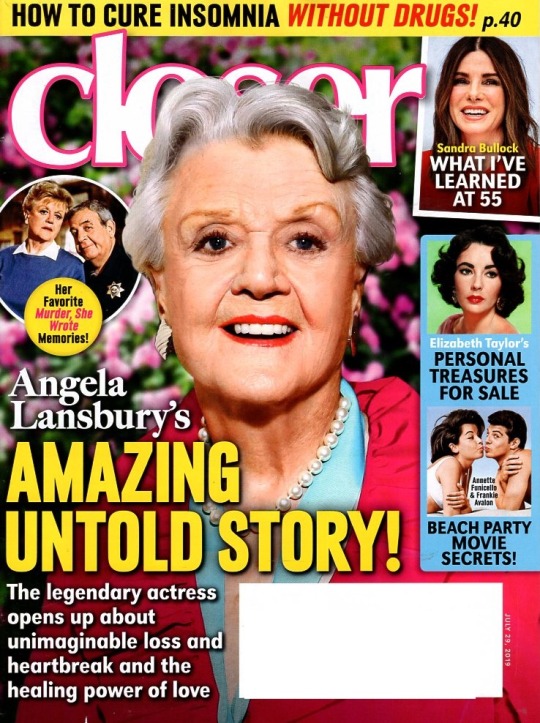
Page 1: Contents

Page 2: The Big Picture -- Martin Sheen and oldest son Emilio Estevez in 1980
Page 4: Barbra Streisand reunited with Kris Kristofferson
Page 5: How Barbara Walters inspired Norah O’Donnell, Sophia Loren returns to acting thanks to her son
Page 6: Hellos & Goodbyes
Page 8: Picture Perfect -- John Stamos and son Billy and the Muppets
Page 9: Julia Louis-Dreyfus, Rob Lowe
Page 10: Trisha Yearwood and Jenna Bush Hager, David Hasselhoff, David Arquette and son Charlie
Page 12: Melanie Griffith, Maria Menounos, Jenna Fischer
Page 13: Sofia Vergara, Kristin Chenoweth
Page 14: Then & Now -- Paul Reiser and Helen Hunt, Danica McKellar, Micky Dolenz
Page 16: Sandra Bullock -- what I’ve learned at 55
Page 18: Cover Story -- Angela Lansbury at 93 -- the bonds of love and family helped her overcome her life’s greatest challenges
Page 22: Jack LaLanne -- fame, fatherhood and fitness
Page 24: Nicole Kidman dreams of sharing her happy home with a new adopted baby
Page 27: Spot the Difference -- Andy Cohen and Chrissy Teigen
Page 29: Horoscopes -- Cancer Lynda Carter
Page 30: Entertainment -- Taylor Schilling on Orange Is the New Black, Katee Sackhoff on her new sci-fi series Another Life, In the Spotlight -- Elisabeth Shue
Page 32: Movies -- Jon Favreau on The Lion King
Page 33: Music -- James Taylor on The Warner Bros. Albums 1970-1976
Page 34: Television
Page 36: Great Escape -- Alex Guarnaschelli in Charleston
Page 38: Good Food -- Melissa Copeland’s book 30-Minute Frugal Vegan Recipes -- curry roasted vegetable salad
Page 39: Orange and ginger veggie stir-fry, bean and rice burritos
Page 40: How to cure insomnia without drugs, Christina Applegate
Page 42: Whatever happened to the cast of Revenge of the Nerds -- Larry B. Scott, Andrew Cassese, Timothy Busfield, Robert Carradine, Curtis Armstrong
Page 43: It Happened This Week
Page 44: Wayne Newton -- My secret to happiness
Page 48: Memory Lane -- How surfer boys and girls stormed the sands of ‘60s America and created a wave of teen-movie sensations
Page 52: Remembering Rip Torn
Page 54: The style of Mariska Hargitay
Page 56: Beauty -- pink lip shades -- Alyssa Milano
Page 57: Debra Messing
Page 58: My Life in 10 Pictures -- Diana Rigg
Page 60: Flashback -- Baywatch swimsuits on Pamela Anderson in 1990 and on Selena Gomez now, fanny packs on Jason Bateman in 1990 and on Daisy Ridley now, Toy Story in 1995 and now, wrap dresses on Cybill Shepherd in 1976 and on Peyton List now
1 note
·
View note
Photo

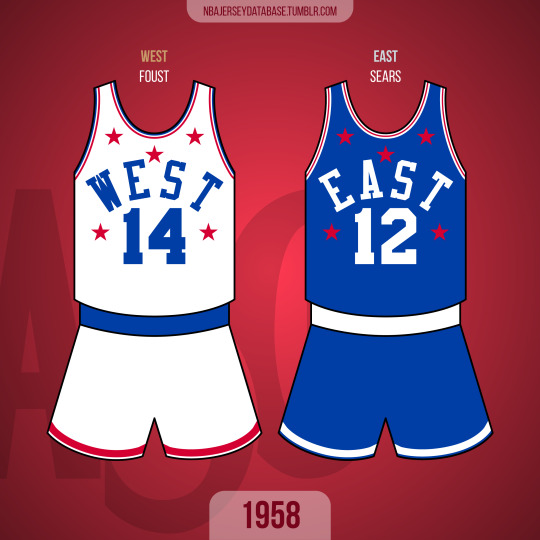

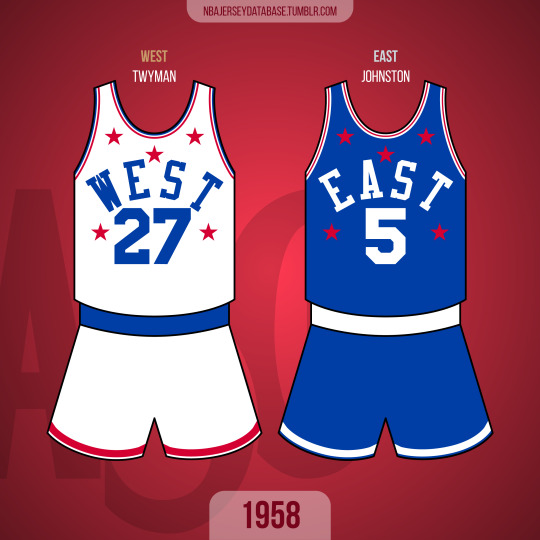

1958 NBA All-Star Game
Kiel Auditorium
East 130 - West 118
EAST BENCH:
Paul Arizin
Neil Johnston
Kenny Sears
Richie Guerin
Larry Costello
WEST BENCH:
Gene Shue
Jack Twyman
Larry Foust
Dick McGuire
Cliff Hagan (DNP no replacement)
13 notes
·
View notes
Text
The Nerd by Larry Shue (1981)

0 notes